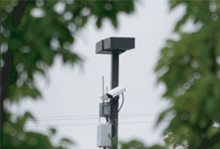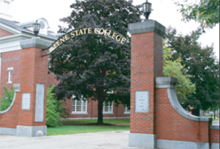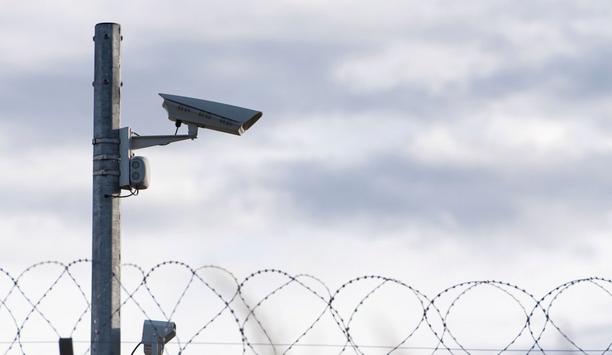 |
| Fluidmesh and MAC Systems provide campus with wireless mesh solution |
The parking lot borders other property not owned by the college and students use it often as a shortcut to town shops and restaurants. The only safety provision previously in place was an emergency phone.
That solution was wireless mesh technology. Although the Canton, Massachusetts-based integration company has engineered, installed and maintained access control and security management systems for some 26 years, this project, completed in August, marks its very first using a wireless mesh network.
Having attended a Fluidmesh Level I Training class several months earlier, William Smith, Project Estimator for MAC Systems partnered with Fluidmesh Networks, Inc. the leader in wireless systems for security applications based on mesh networking technology. Smith contacted Cosimo Malesci, V.P. of Sales at Fluidmesh Networks, who visited the site: the parking lot had no fiber backbone and there were also physical constraints, including an old railroad trestle that splits the campus and isolates the lot as well as a bridge that crosses a stream. Neither the bridge nor trestle is owned by the college so attaching surveillance equipment to them was out of the question.
But there was one key factor working in their favour. They had line of sight. "We spotted, way across the athletic field, the Redfern Arts Building that had line of sight to a pole in the lot," Smith recounts. Together, Fluidmesh and MAC Systems developed a design. MAC Systems installers relied on Fluidmesh technical support to streamline its design of the model and when it was time to perform the install, the pre-assembled products were put on the trucks and brought to the job site.
The wireless mesh architecture enables the creation of reliable and redundant networks, where every Fluidmesh unit can route packets around physical obstacles, sources of interference, or low quality links |
The wireless mesh architecture enables the creation of reliable and redundant networks, where every Fluidmesh unit can route packets around physical obstacles, sources of interference, or low quality links. Using the Fluidmesh 2200 with a combination of omni-directional and patch antennas, the Keene State College system is based on a structured mesh network to achieve optimum performance in terms of bandwidth and redundancy. The Fluidmesh network operates on both 2.4 GHz and 5.8 GHz bands and switches automatically from one frequency to the other based on interferences in the area. The cameras are capable of running at 4 CIF - 25 fps.
Every Fluidmesh 2200 series automatically detects the type of video packets (i.e., MPEG4 vs. M-JPEG, I-frame vs. P-frame) and the transport protocol (i.e., UDP vs. TCP) and optimises the wireless transmission based on the packet type. Moreover, video packets are prioritised over data packets in order to minimise delays.
 |
| Fluidmesh network provides connectivity between the camera locations and the campus LAN |
Amanda Warman, Keene State College's Director of Campus Safety, sums it up well when she says: "The installation of the new CCTV system was seamless. The expanded protection it lends to this area of our campus has greatly increased our ability to provide comprehensive security coverage while improving our students' perception of safety here at Keene State College."
There are many dynamics inherent to college campuses that make wireless mesh technology a good choice for security applications. "Mesh networks are a great fit for university campuses because of their ease of deployment and reliability," Malesci says. "They provide a network infrastructure which can be used not only for surveillance cameras but also for other applications such as access control and emergency phones expanding even more the potential for this technology."

















